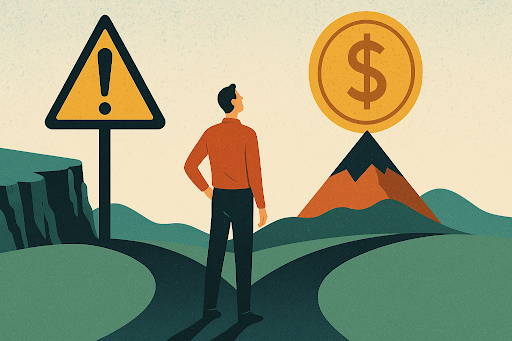|
How
Risk and Reward Drive Human Fascination

Humanity’s
relationship with risk and reward is ancient and deeply
ingrained. From early hunters chasing prey to modern
investors chasing returns, we are wired to weigh potential
gains against possible losses. This delicate balance
shapes our decisions, fuels our ambitions, and even
defines our leisure. Whether climbing mountains or
spinning reels at Lucky
Hills games, the thrill of uncertainty captivates
us. Our fascination isn’t just cultural—it’s
biological, psychological, and economic.
The
Psychology Behind Risk-Taking
Our
brains respond to uncertainty with a cocktail of chemicals.
Dopamine surges when we anticipate reward. Cortisol
rises with perceived threat. The interaction of these
chemicals can make risk feel thrilling. Studies show
that moderate risk engages our focus. It creates flow
states where time seems to slow. People look for enough
uncertainty to be aroused but not overwhelmed. This
sweet spot varies by personality and context. Some
thrive on extreme sports. Others prefer strategic
financial bets. The common thread is the pursuit of
meaningful challenge. Risk becomes appealing when
paired with agency and skill.
Key Insights into Risk and Reward
Behaviour
is profoundly affected by risk-reward mechanisms,
research shows. People are surprisingly quick to engage
in something that gives you a chance of winning, even
if the loss is greater. The exciting part of the gambling
process is when we win. Nowadays you have the option
to play around with risk by using modern tools such
as a probability calculator or by taking advantage
of demo modes that virtual trading platforms offer
on their websites. Even evolutionary biology says
taking risks helped with survival. Here are a number
of interesting statistics that highlight our relationship
with risk and incentive.
* Approximately 63% of traders admit taking higher
risks after early wins
* Over 85% of gamblers prefer games with bonus features
or free spins
* The global gaming market reached $365 billion in
2024, up from $307 billion in 2023
* 72% of respondents in a 2023 study said “near-miss”
outcomes encouraged replay
* Around 59% of players set personal loss limits before
engaging in risk-based activities
* Functional MRI scans show that anticipating a win
activates the same brain regions as cocaine
* People recall their biggest wins 40% more vividly
than their most significant losses
Balancing Risk and Responsible Enjoyment
Enjoying
risk requires balance. Setting limits preserves the
fun while preventing harm. Time constraints, budget
caps, and clear goals help. Many platforms now offer
reality checks and self-exclusion tools. These features
support healthier engagement. They let people enjoy
excitement without negative consequences. Playing
should feel entertaining, not stressful or compulsive.
Learning
the odds also helps.
Risk
and reward will always captivate us. They spark innovation,
fuel adventure, and deepen experiences. Recognising
what drives this fascination helps us harness it positively.
We can seek excitement while staying grounded. Whether
exploring new ventures or enjoying leisure activities,
mindful engagement ensures that risk remains a source
of joy rather than regret.
|



